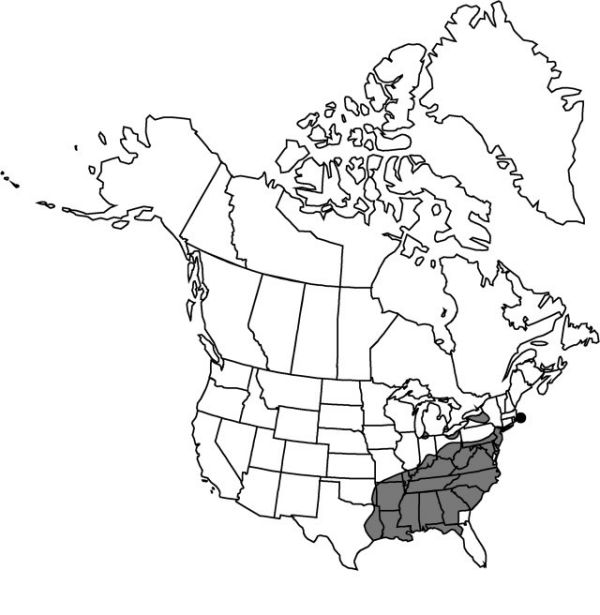Tipularia discolor
Gen. N. Amer. Pl. 2: 195. 1818.
Plants 10–65 cm. Corms 7–30 (–50) mm diam. Stems scapose, glabrous, basally 1–2-sheathed. Leaves persisting over winter; petioles 3–15 cm; blade purple abaxially, green or greenish purple adaxially, ovate, 5–10.5 × 2.5–7 cm. Inflorescences 8–28 cm; floral bracts 0.2 mm. Flowers green, pale greenish yellow, or greenish purple, (5–) 10–55; sepals distinct and free, oblongelliptic to oblanceolate, 5–8 × 1.5–2.8 mm; petals linear-oblong to oblongelliptic to linear-oblanceolate, 4–7 × 1–1.8 mm; lip 5–8 × 2.5–3 mm, with 2 prominent basal lobes, spur 10–23 mm; column 2.5–4 mm. Capsules 9–12 × 4–5 mm.
Phenology: Flowering Jun (north)–Sep (south).
Habitat: In humus-rich soil of deciduous woodlands, frequently in sandy, acid oak-pine woods of Southeast, often in depressions under sweet gum
Elevation: 0–1000 m
Distribution

Ala., Ark., Del., Fla., Ga., Ill., Ind., Ky., La., Md., Mass., Mich., Miss., Mo., N.J., N.Y., N.C., Ohio, Okla., Pa., S.C., Tenn., Tex., Va., W.Va.
Discussion
Tipularia discolor is pollinated by noctuid moths, the pollinaria attaching to either the left or right compound eye depending on whether the column of a particular flower is slightly twisted to the left or to the right (W. P. Stoutamire 1978).
Selected References
None.
